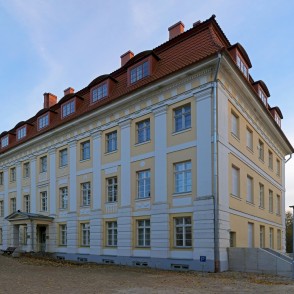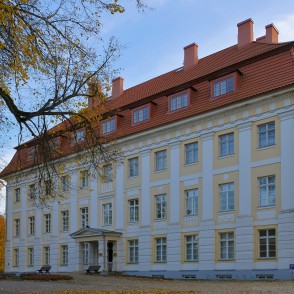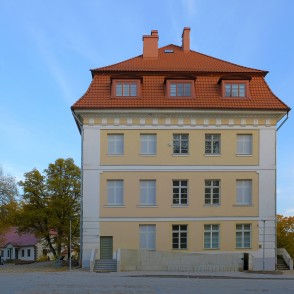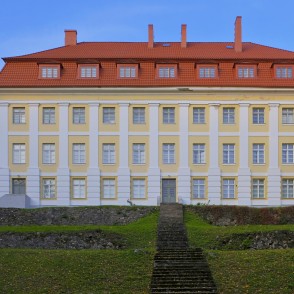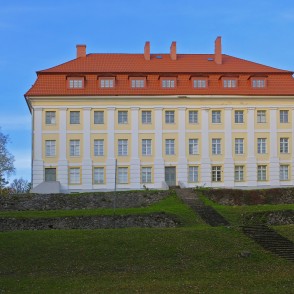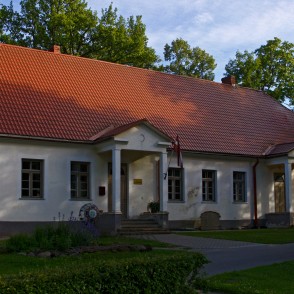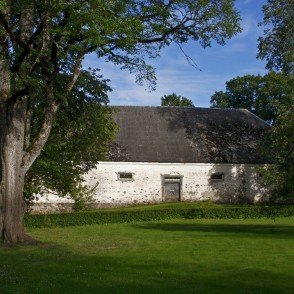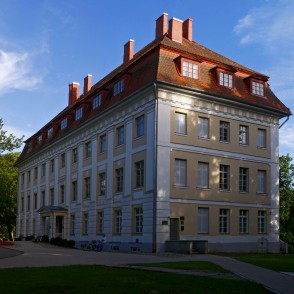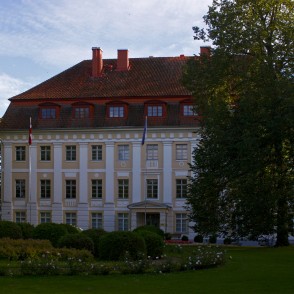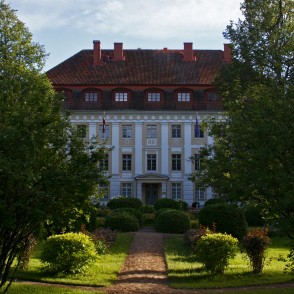The Waltenberg Manor is unique with its collection of old buildings were built in late Classicism style during the latter half of the 18th and first half of the 19th century. Individual buildings were also constructed during the late 19th century.
At the centre of the complex is the manor built in 1780 upon the suggestion of the manor owner Georg von Falkersahm. The design is the work of Dresden architect Friedrich August Krubsacius.
The manor is first mentioned in 1538 when Baron von Falkenberg was the owner. His name was the basis for the Latvianized name – Valtenberģu muiža.
The fascade is the only remnant indicating the grand life of the manor that once was. One can imagine the first storey with its kitchen, servants quarters and guest rooms. On one side of the corridor that ran through the second storey one once had the baron's office and bedroom, but the other housed the chaambers of the baroness. A dining room, hall and chamber maid's rooms also would have been here. The third storey housed guesrs of the manor. The manor was surrounded by other buildings. One of them housed the gardeners, brew master, horse master and carpenter. From this building heading toward the road is the granary built at the turn of the 19th century. Next to it was the post office where regional hearings took place. Only the foundations and steps are left of the building to the left of the manor which housed the estate steward, overseer and personal doctor anter a fire in 1944. Across the road from the outbuilldings used to be the stall with a covered arcade which housed the baron's carriage horses. Not far from the road in a small house lived the stable boys. Only ruins remain from both the stables and the three beer cellars.
Placement of the brewery, wash house, barn and dog kennel can only be ascertained through photographs. The manor house was also surrounded by a colorful flower and fruit tree garden. But, as the teacher Normunds Luste notes in his memoirs, the average Latvian peasant was rarely allowed to come that close to the house.
The manor was destroyed by fire under peasants rebellion in 1905. It was reconstructed in 1932 and adapted for use as a school. The school was located in the Manor until the spring of 2013. The first floor was renovated in 2015 and now houses the Mazsalaca Regional Museum.

